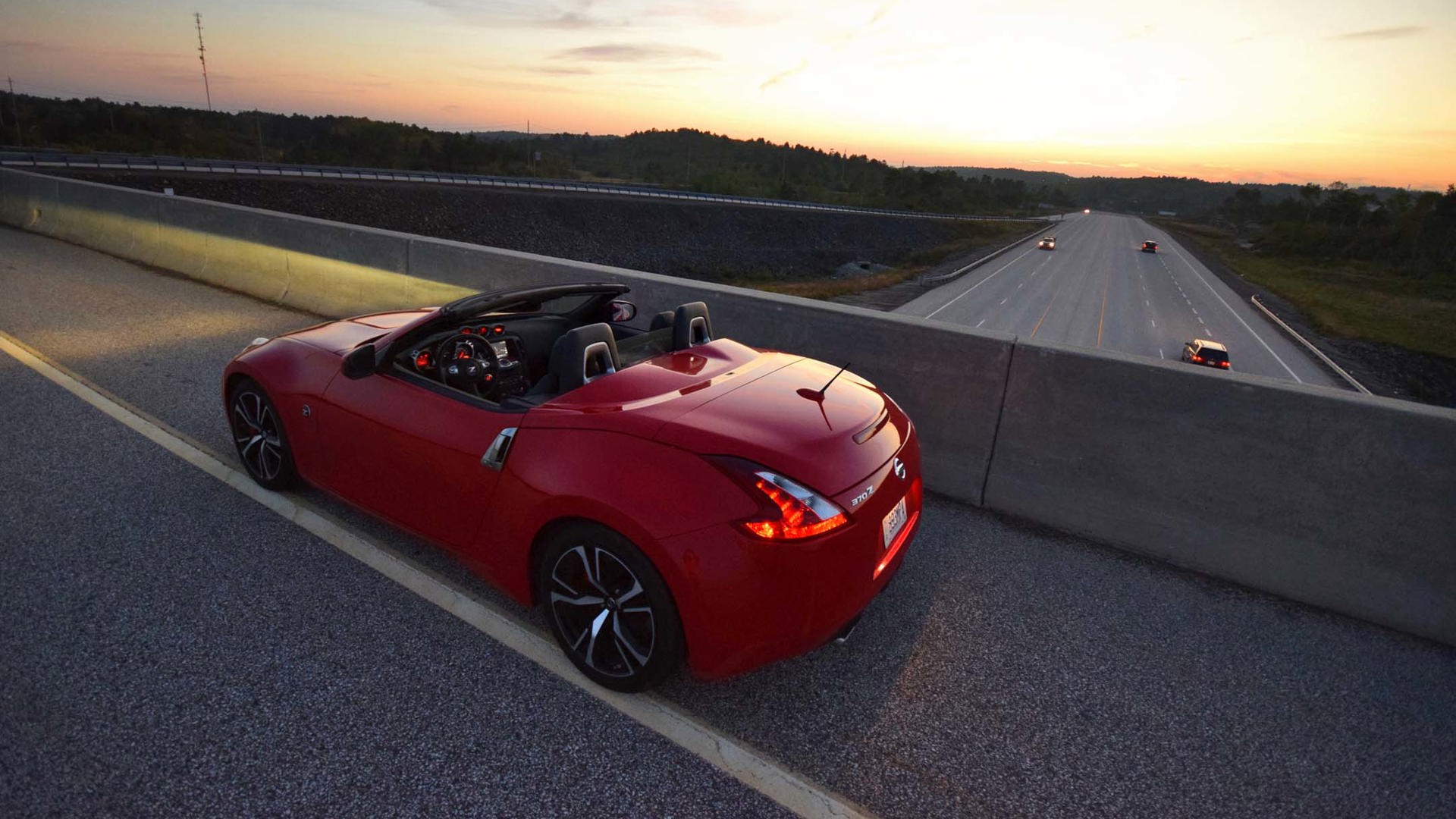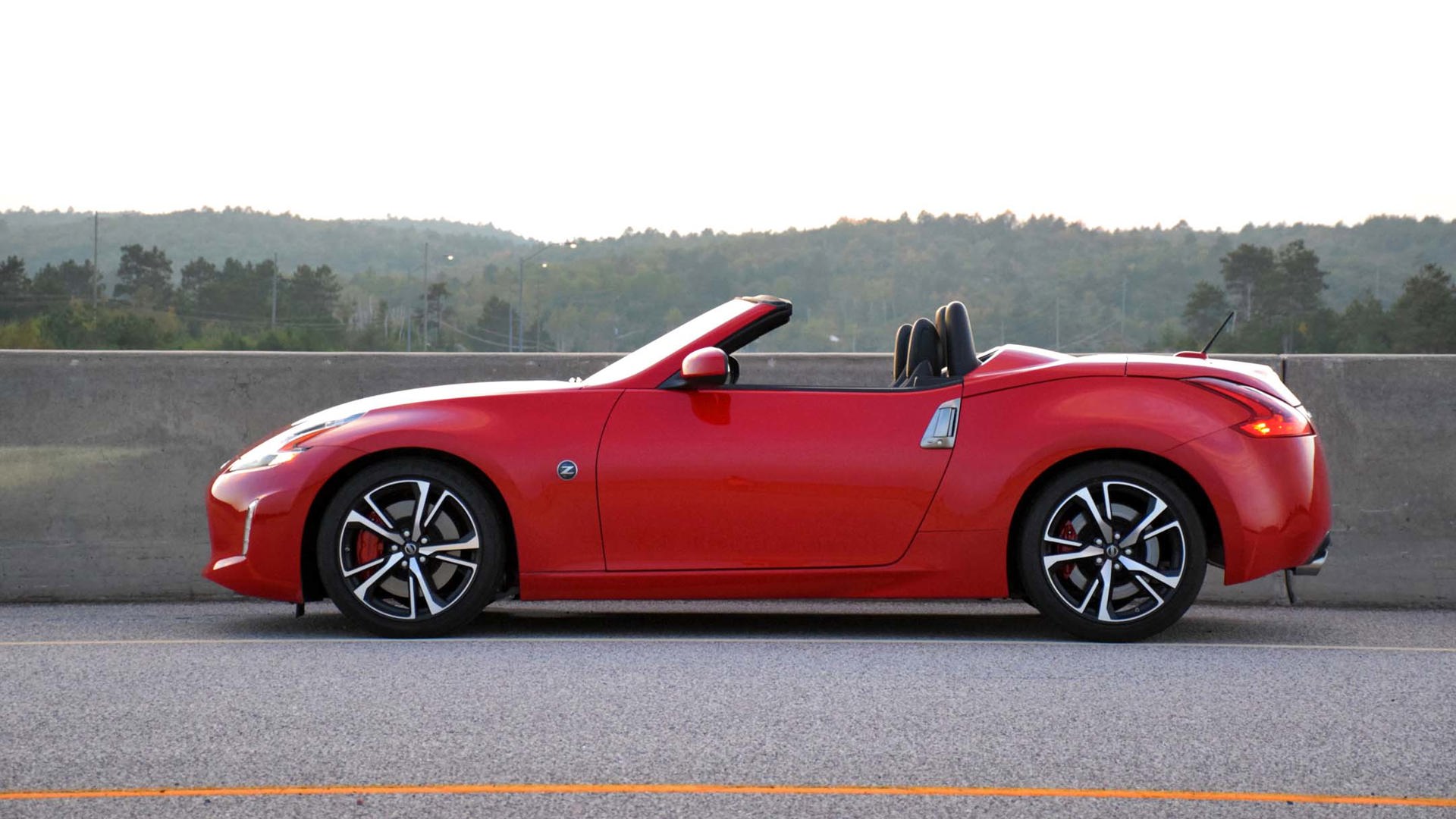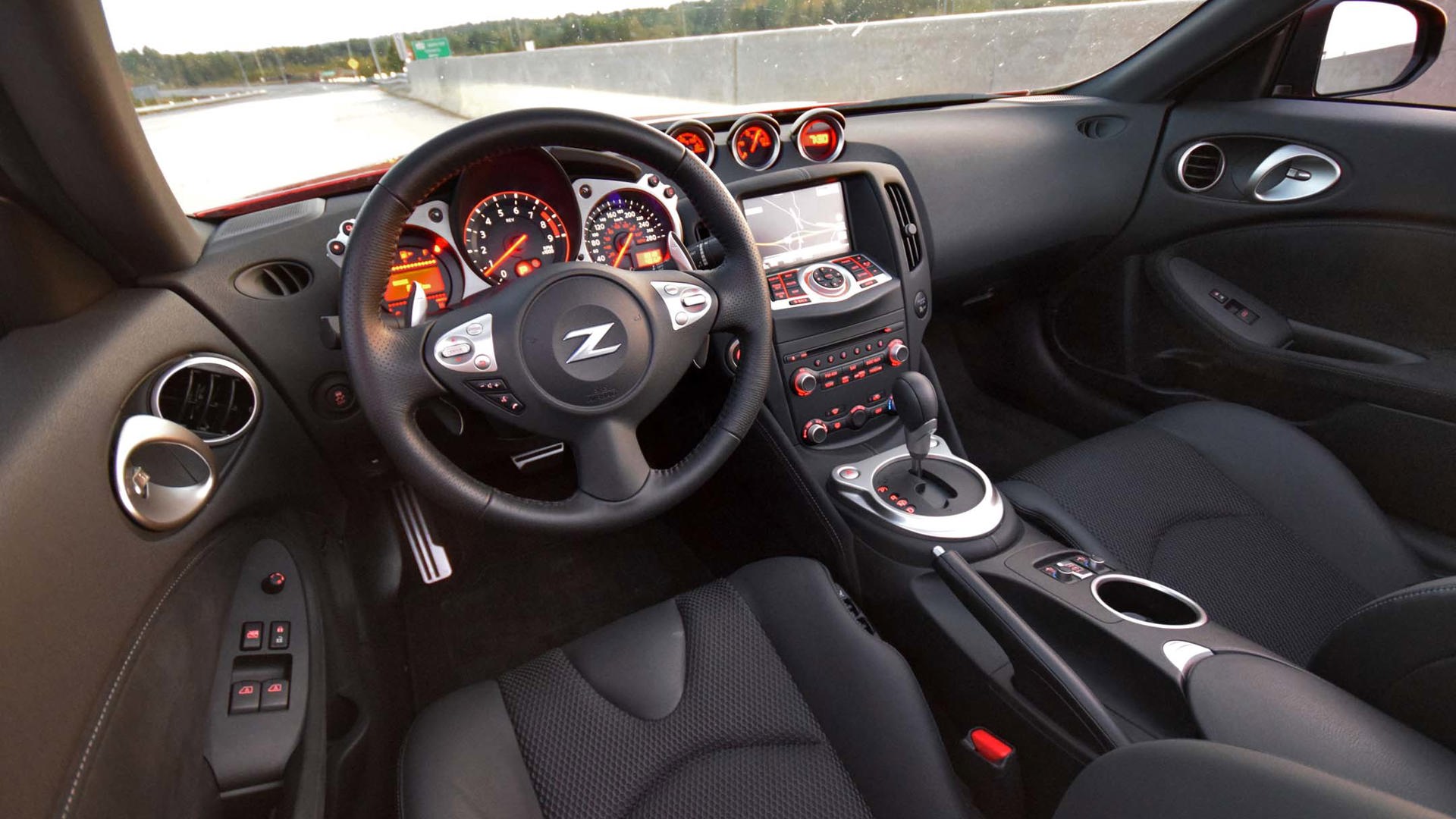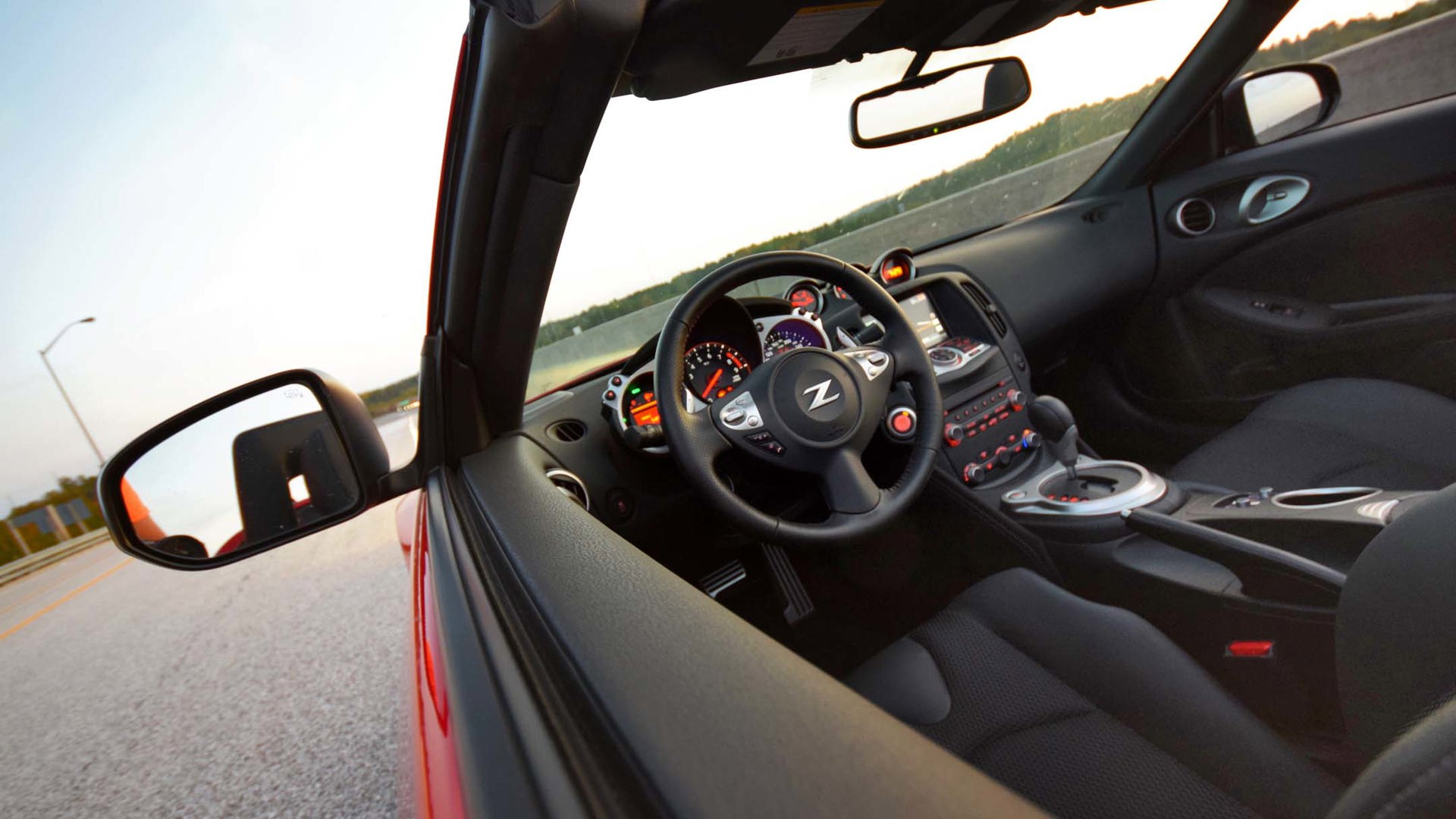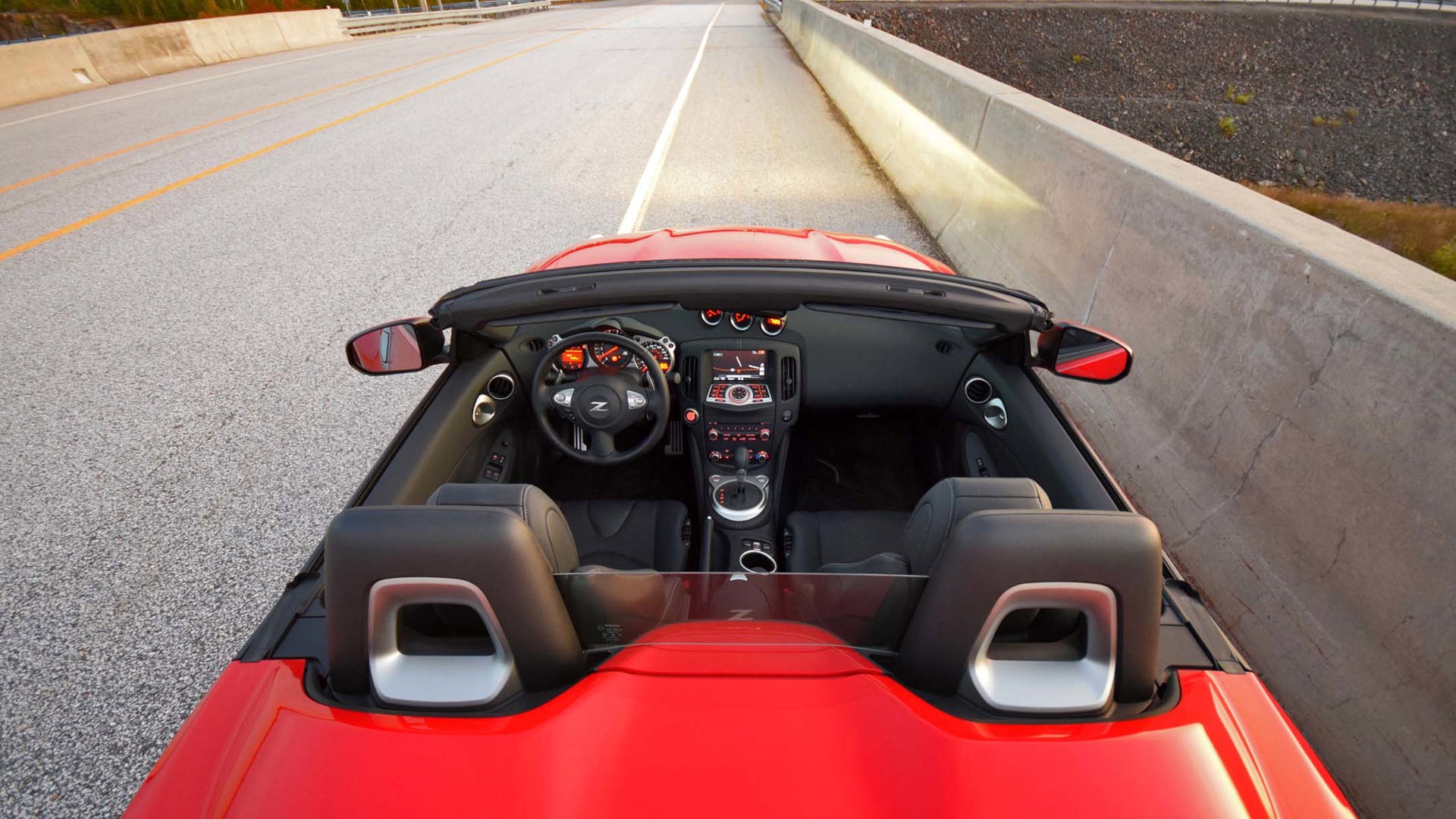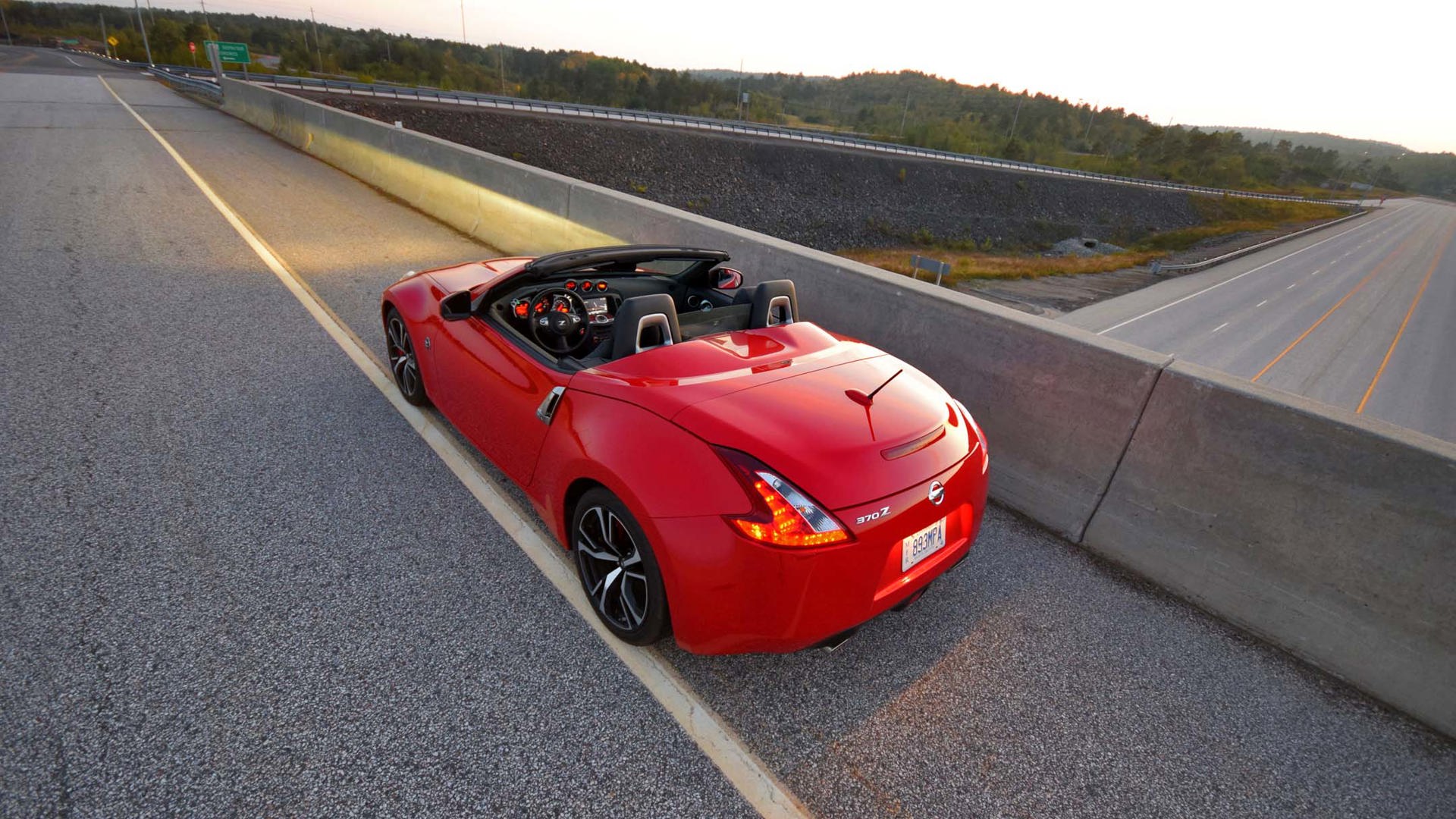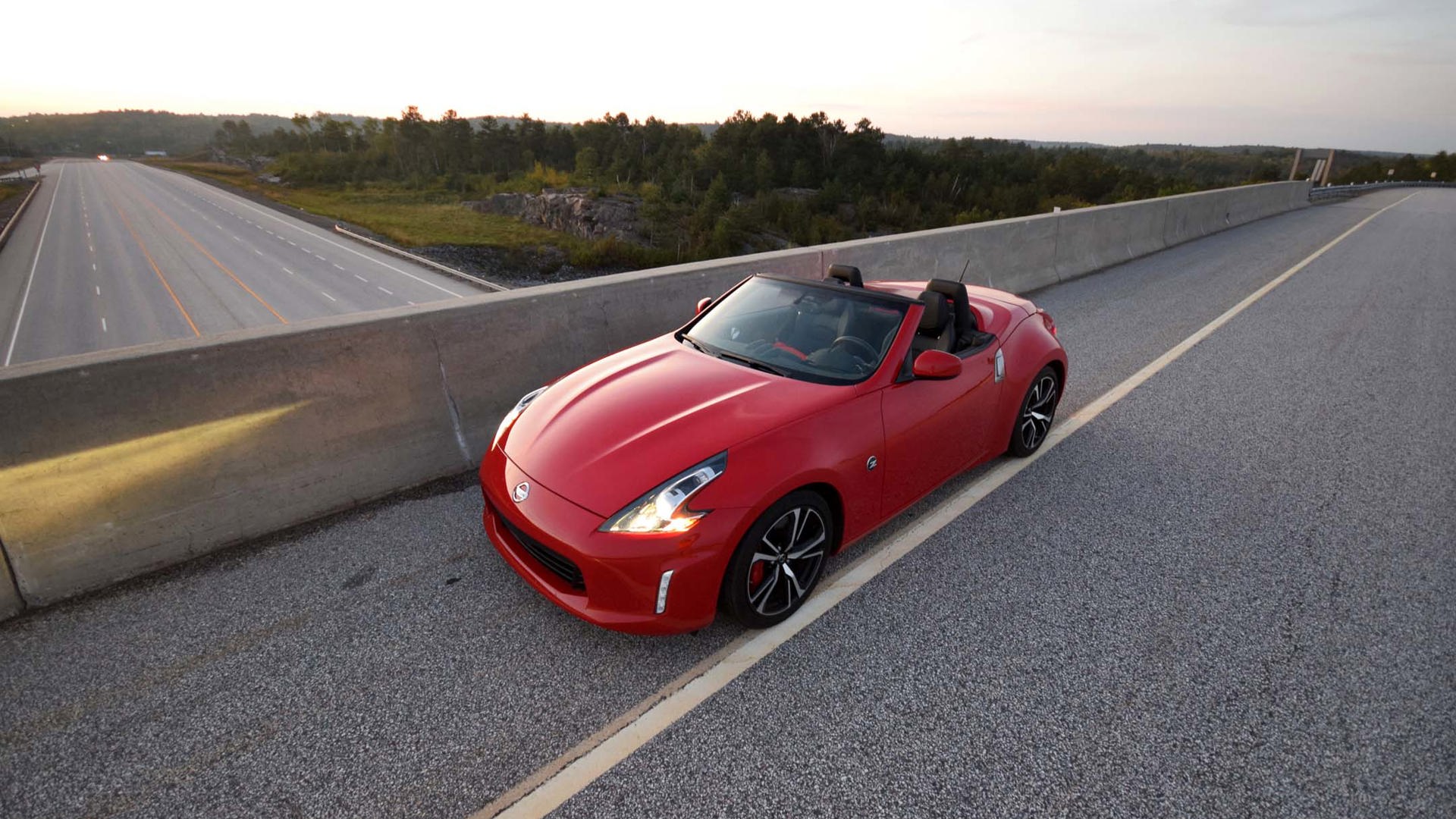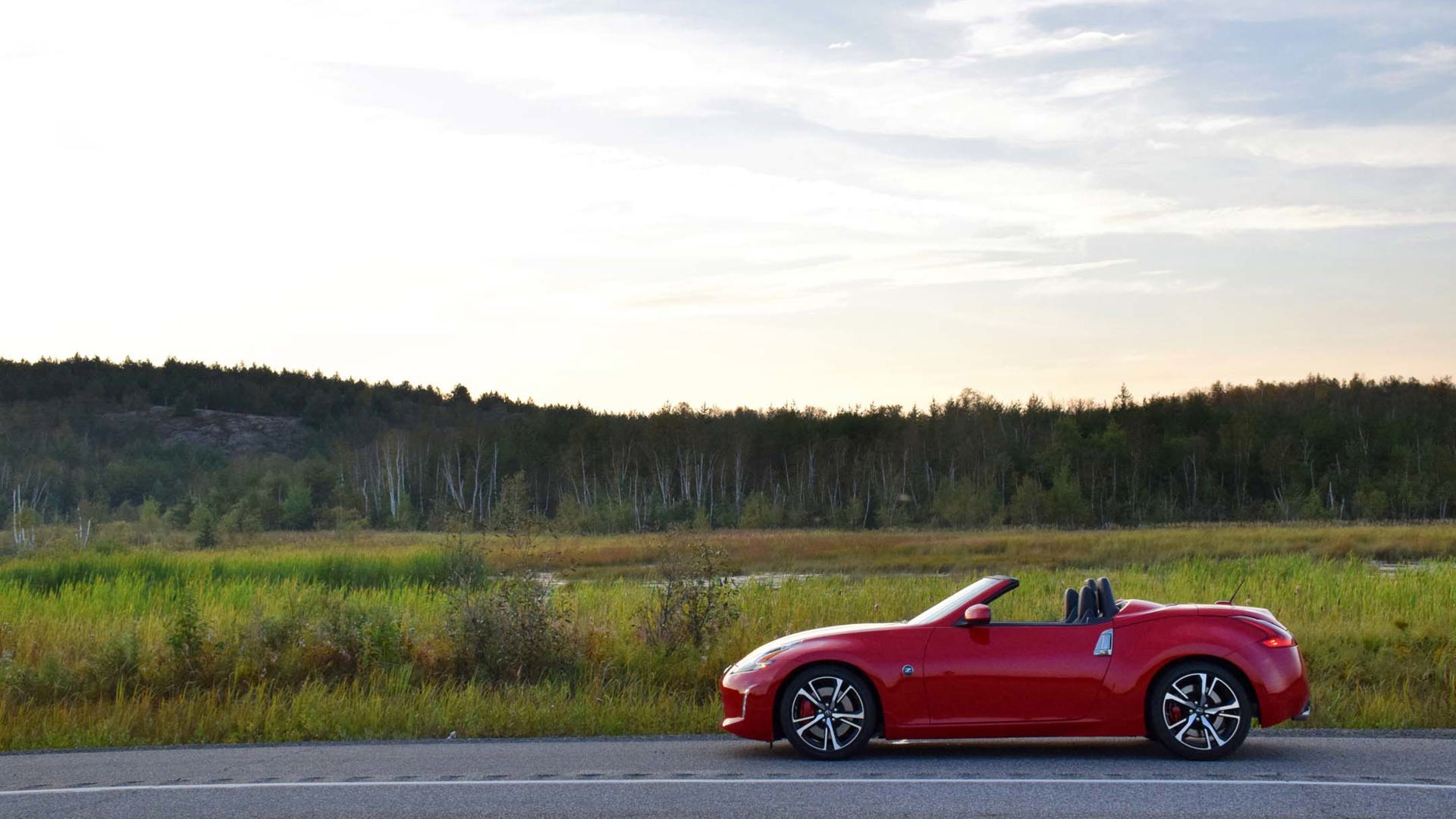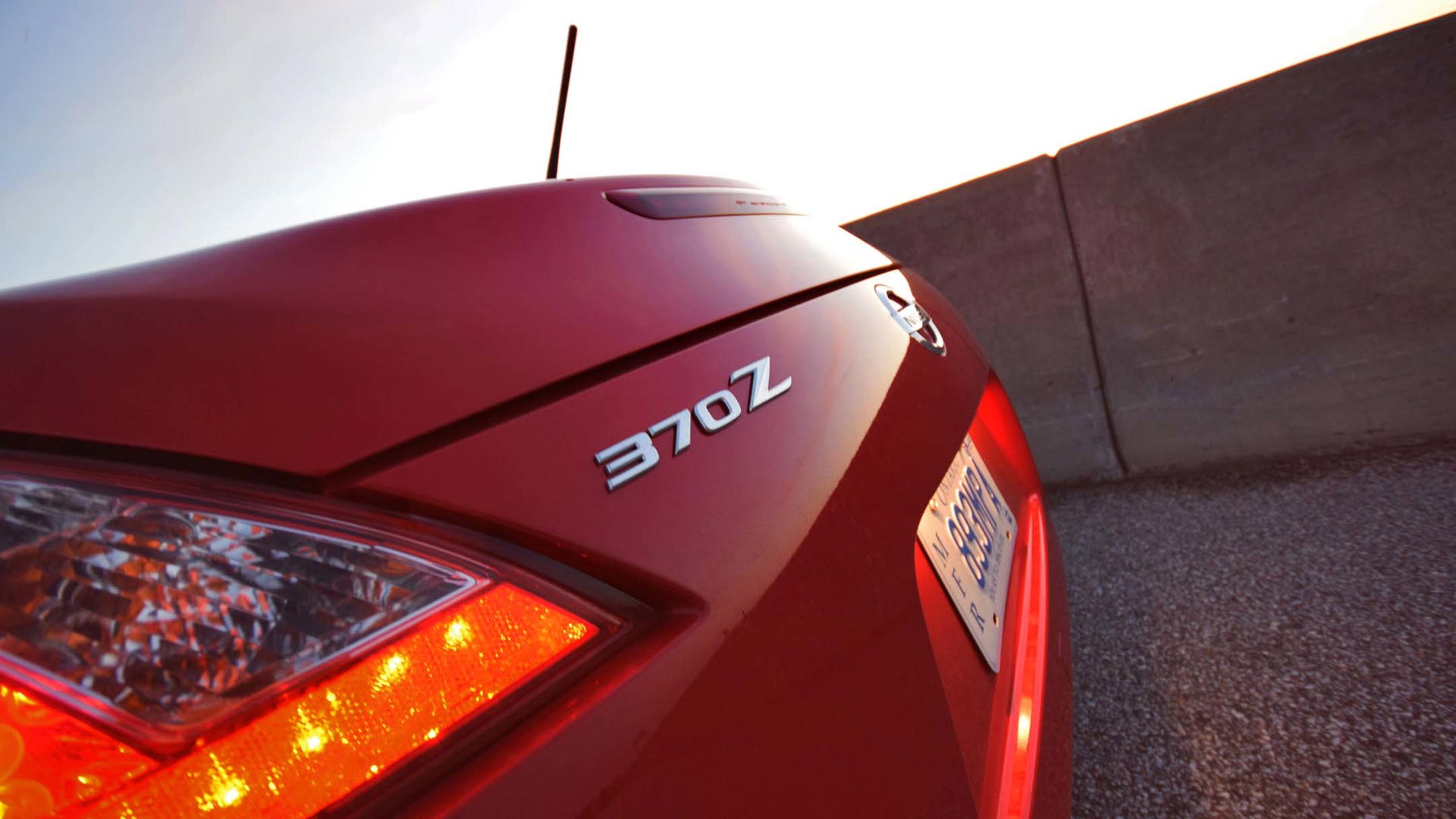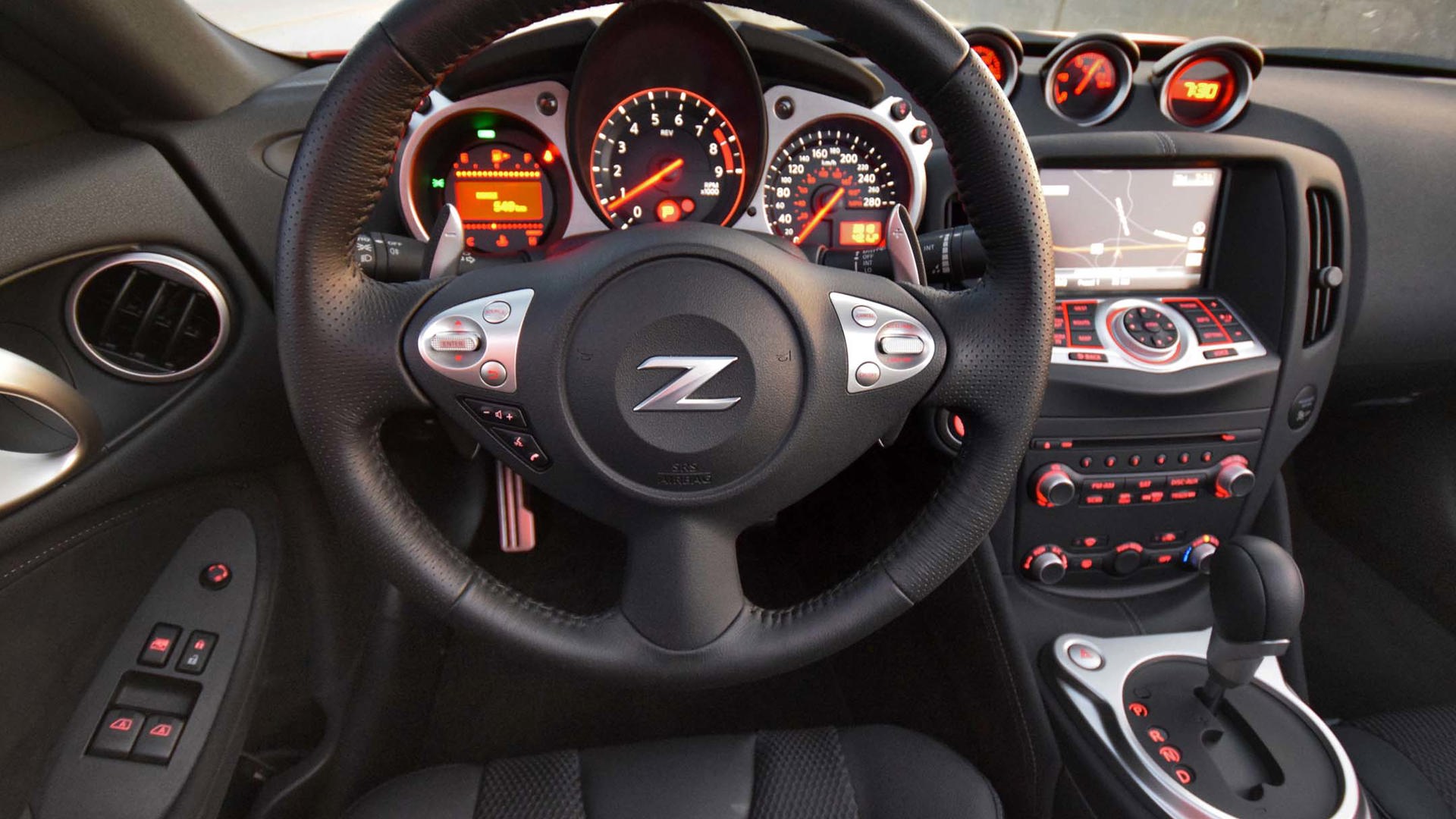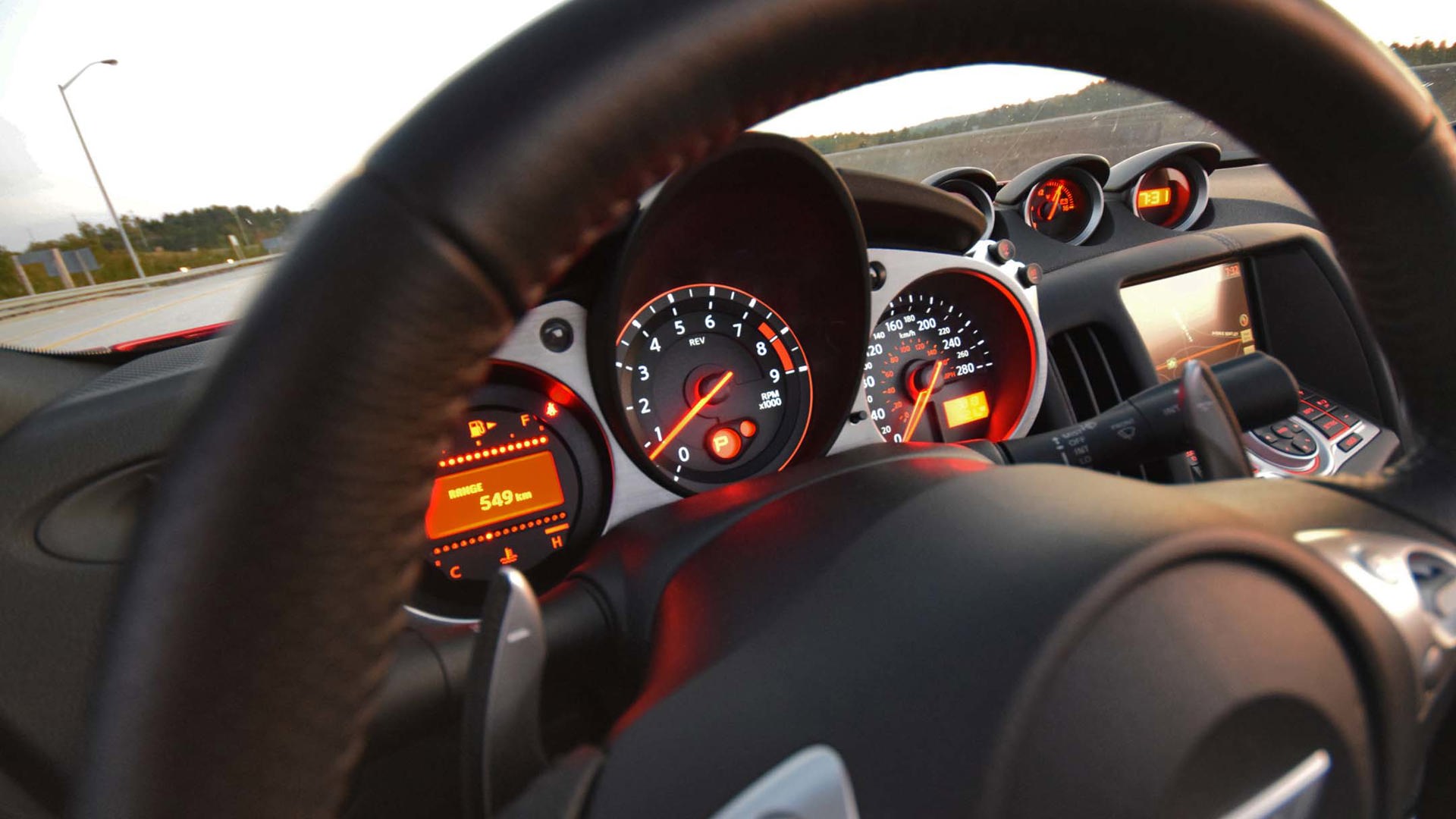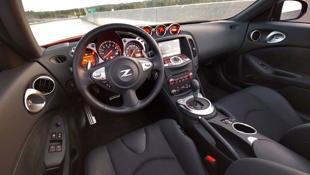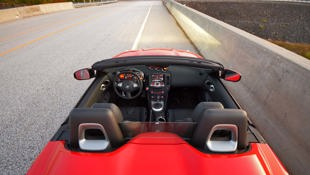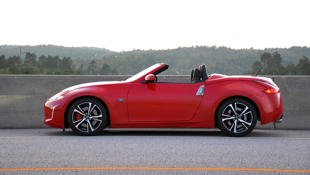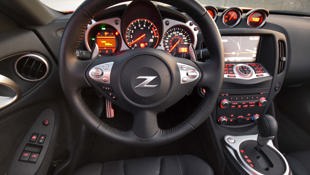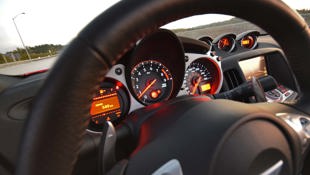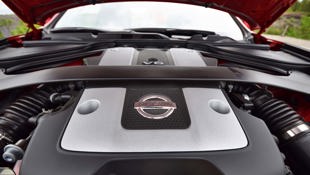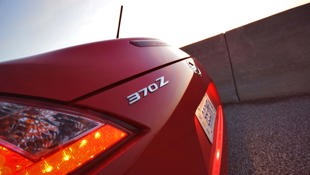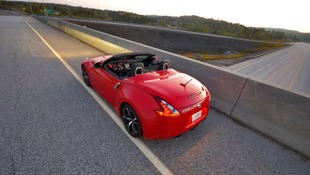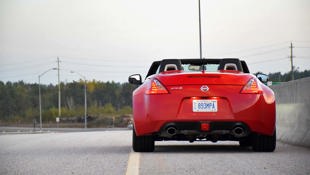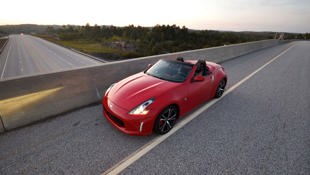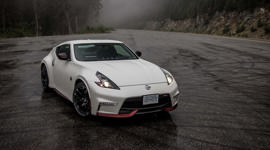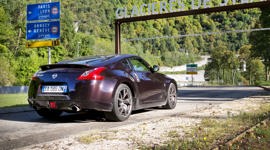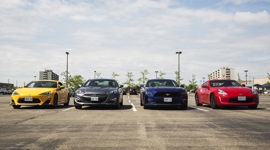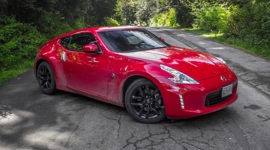 AutoTrader SCORE
AutoTrader SCORE
-
STYLING8/10
-
Safety7/10
-
PRACTICALITY6/10
-
USER-FRIENDLINESS7/10
-
FEATURES7/10
-
POWER8/10
-
COMFORT7/10
-
DRIVING FEEL8/10
-
FUEL ECONOMY7/10
-
VALUE6/10
About nine years ago, the arrival of the 370Z at North American dealers was keeping Nissan sales staff busier than a one-legged man in an ass-kicking contest. The latest in Nissan’s long line of “for the masses” performance cars was light, feisty, balanced to the nines, and dialled in to deliver a genuinely athletic, cut-price, world-class driving experience. Plus, it was rear-drive, so owners could talk drifting with their pals.
There’s no wishing for more traction, and rarely a peep from the tires. It sticks to bends like a suction bathmat to the inside of a tub.
Today, the 370Z enters model year 2018 as, largely, a brand-new, nine-year-old car – and sales are up, thanks largely to the deployment of a high-value, $30,000 Enthusiast Coupe Edition model.
Today, many years into its life, there remain a few reasons to consider a Z, and a few not to.
The subject of this story is not the high-value $29,998 Enthusiast Edition Coupe. Instead, it’s a 370Z Touring Roadster with the $1,500 automatic transmission and $4,100 Sport Package, which adds big red brakes, and a wheel and tire upgrade. End result? A 332 horsepower drop-top two-seater wearing a $55,000 window sticker.
And so, the elephant in the garage: that’s a lot of cash for a car with a cabin, driveline, tech, and features from nearly a decade ago. That means no radar cruise. No Apple CarPlay or Android Auto. No lane-departure warning. A central touchscreen interface whose once-stunning graphics are now blown easily out of the water by similar interfaces in any number of half-the-price family sedans.
The age shows elsewhere, too, a little. For instance, the quick-acting, full-power cloth-top is a button-press away from here or gone – but as it folds or erects, it’s noisier, more likely to slam, and less graceful than the norm for many more-modern convertibles.
Or the fuel mileage: numerous competitors create 300-plus horsepower with more modern, possibly turbocharged (though likely not as entertaining) powerplants, which use less fuel.
All said, the Z’s aging seems more forgivable in the high-value, $30,000 variant, but less so in a version like this tester, at nearly twice the price.
And though the Z’s interior has aged well and has a boutique, upscale look and feel, many of its competitors have moved ahead in recent years. Have you looked inside of a new $55,000 Mustang or Camaro lately?
“But American sports cars are fat and handle like a pail full of soggy Charmin!” shout the fanboys. Thing is, if you’ve driven a recent Mustang or Camaro from this price range, both of which have evolved since the 370Z’s launch, you know that’s not true, either.
If you’re after the most modern and cutting-edge sports car around for your $55,000, this is not the machine you’re after.
But dig a little deeper, and you see the timeless side of the Z’s appeal – much of which exists because of its unique driving character.
The engine is a gem, and despite a hefty appetite for premium gas if you can’t keep your boot out of the revs, it will go down in the history books as one of the best V6 engines of all time. The VQ37VHR powerplant is something increasingly rare and special these days: a big-power, all-motor V6 that revs gleefully to the moon, and provides 7,500 buttery-smooth revs to play with. Most of them pass beneath the tachometer needle with a distinctively mechanical sound that’s more intake, valves, and cams than exhaust trickery. This engine gets loud when worked, and it sounds fantastic. Further, power piles on hard and fast in the top third of the rev range, for a peaky and thrilling power curve not common in the world of turbocharged engines.
And there’s the still-top-notch driving feel to the thing. The Z wears its skin tightly, signalling well the fact that it’s small, light, and is suspended to keep its body as close to its wheels as possible at all times. By and large, it handles the way it looks like it handles. Steering is typical Japanese performance: lighter and quicker than you think, and a measure more playful and encouraging than the more heavyset feel you’ll find in a comparable German performance car.
The Z responds fast, squirms, slips and slides beneath you gently when pushed around corners, and in all, feels willing, eager, and very precise, but not hyperactive. Grip is immense. As quickly as you’d dare to push it on public roads, there’s no wishing for more traction, and rarely a peep from the tires. It sticks to bends like a suction bathmat to the inside of a tub.
Further, as Z was engineered from the ground up as an authentic sports car from the get-go and not a commuter model with go-fast parts tacked on, there’s a natural sense of talent that shines through when you really get it cooking on a winding road.
Brakes operate with good initial bite, precision is appreciable, and stopping power borders on painful during panic stops. The gist? Drive the pants off of it, and the Z just comes right to life beneath you.
Driven gently, the tester was a bit of a mixed bag. The enlarged wheels and thin tires turn in a busy ride at times, and especially on rougher in-town roads. Here, ride quality leans far towards the stiff and busy side of comfortable. If you’re coming into a model like this one from some sort of sedan, the ride may prove too rough. If you’re coming into it out of something sporty, or you’re a driver willing to trade off a little comfort for a lot of handling, you’ll be fine.
Functionally, the cabin fits two adults of average size snugly. At 5'10", your writer found it neither cramped nor roomy. You feel the way you should feel driving a sports car: like you’re wearing the vehicle, more than sitting inside of it. Entry and exit are par for the course with a low-riding two-seater: a hefty drop-in is required, though relatively large door openings help ease access.
Storage is better than expected, too. The trunk is small, wide, and shallow, though it should accommodate luggage for a two-person road trip with relative ease. On board, door cubbies, a covered centre console, and some bins and drawers mounted to the rear firewall help keep you organized and clutter-free on the go.
Other notes? The steering wheel and instrument cluster tilt as a single unit, meaning the big centre-mounted tachometer and nearby instrumentation are always sitting at the perfect angle, the Bose stereo system is punchy and bright, and the air-conditioned seats do a nice job of mitigating torrential back-sweat on hot days. Top down with the windows up, wind and road noise levels require a significant increase in conversation volume only past about 90 km/h, and the powerful A/C system kept your sweatier-than-average writer nicely chilled and dry, even into the high 20-degree range.
The seven-speed automatic transmission is notable, too. Leave it in Drive, and light-throttle shifts are smooth and creamy and careful, the gearbox quickly selecting the proper gear to get the revs into the sweet spot when drivers smash on the throttle. Paddle shifting isn’t the quickest going, but remains entertaining – you feel the transmission quickly disengage, rev match, and re-engage at times, for a feel not dissimilar to that of a manual transmission. Faster paddle-shift transmissions are abundant today, but the Z’s ability to respond and rev-match quickly enough makes the manual shift mode entertaining enough to use.
If you’d like a manual but need to share your Z with someone who needs the automatic, this is a decent compromise. Or, skip the automatic, and save $1,500.
Skip the Sport Package, too, for another $4,100 savings. You’ll give up the big red brakes, but you don’t really even begin needing these unless your Z will visit a racetrack. You’ll also give up the wheel and tire upgrade, which will make for a more comfortable ride. This is a Touring Roadster, after all.
Equipped thusly, you’re at about $50,000 – still a princely sum, and one likely to find acceptance mostly with die-hard Z fans concerned primarily with revs and grip and frisky handling, not the latest features, the gadgets, or cabin design.
If that doesn’t sound like you, and if you can go without the convertible top, the 370Z Enthusiast Edition is still, by a landslide, the best value in a 370Z today – at $30,000.
| Engine Displacement | 3.7L |
|---|---|
| Engine Cylinders | V6 |
| Peak Horsepower | 332 hp @ 7,000 rpm |
| Peak Torque | 270 lb-ft @ 5,200 rpm |
| Fuel Economy | 13.0/9.7/11.5 L/100 km city/hwy/cmb |
| Cargo Space | 119 L |
| Model Tested | 2018 Nissan 370Z Touring Roadster |
| Base Price | $49,698 |
| A/C Tax | $100 |
| Destination Fee | $1,750 |
| Price as Tested | $57,148 |
|
Optional Equipment
$5,600 – Automatic Transmission $1,500; Sport Package $4,100
|
|
